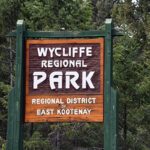Home »

Second set of rules threatens community asset
Letter to the Editor
An Open Letter to the City of Kimberley Mayor and Council…
On February 27, a report was presented to City of Kimberley council that recommended the termination of the Joint Use Agreement (JUA) between the city and School District No. 6 (SD6).
The JUA, which was originally signed in 1969, was the first of its kind in B.C., and its purpose was to avoid duplication of facilities between SD6 and the city, and “promote better use of these joint-use facilities for community use in an effort to optimize recreational and leisure opportunities for the entire community.”
While the report to council stated that the JUA was not meeting its original intent, I argued at the time that it was. The “Analysis” section of the report held only one section, “Financial Implications,” which outlined the potential profits that could arise from charging school children for facility use, I argued that would not be the case, either in the short or long term.
During the JUA discussion on February 27, council chambers was packed with concerned parents. Ultimately the issue was tabled, and since that date, my wife and I have been carefully watching the council agenda, waiting for an opportunity to continue our involvement with the JUA discussion. But we were never afforded the opportunity. Instead, a report was added from the Committee of the Whole only a day or two before the council meeting of May 8, 2017 (linked here with the relevant reports with attachments on pages 31-102.) Council voted to not dissolve the JUA, but voted to implement a new fee schedule for facility rentals.
My first issue is not with the rate hikes, but with the justification attached to them. Very few residents, including me, fault the city for needing to cover their facility costs with rental fees. Unquestionably, there is a price to pay for keeping these recreational facilities viable. But the report states, “The biggest impact from the implementation of the new user fees is not to the schools, where core school programs are funded by the SD6 and not passed on to the parents.”
This is not true. If an activity goes from costing $0/hour to $40/hour (new ice fees for one hour) it will not remain on the list of core school programs. If a school decides to somehow fund the activity, that money will be taken from some other program within the school.
The letter from SD6, attached to your report, states as much: “schools will not receive additional funding to cover these costs” and “the net result will most likely be less use of your facilities.”
The bottom line is that if a school chooses to continue offering the same programming across the board, the new costs will be downloaded onto families. If council voted in favour of the new fee schedule based on this report and understood that it would not have an effect on Kimberley kids, they were misinformed.
The second issue I have is with the report’s specific targeting of the Selkirk Sports School hockey program for double the rental fees of all other school groups, clearly meant to generate profit.
If $40/hour covers the city’s costs, what other explanation is there for doubling the fee for one specific group other than profit. The Sports School program is an optional course available to all students in grades 8-12 with the expected outcome of developing student athletes with character. The report to council includes misconceptions about the program, and uses these to justify a higher rental rate.
The report states that the Sports School “is offered by the school and paid for directly by participants. It is not funded by the school.” This is not true. Although I was never contacted to share details about how the fees for Sports School are spent, I can tell you 100% of the fees collected from participants are spent primarily on bus transportation, with the remainder going towards on and off ice training equipment and aids, bringing in specialized skill coaches and kinesiologists, visiting local training facilities in Kimberley, Cranbrook and beyond, and, as a special treat, buying nosebleed tickets to a Calgary Flames game this past January.
None of the collected fees pay for the teacher. Selkirk funds the teacher and therefore, the program, which is seen as an integral part of the diverse program offered to Kimberley students. This program does not, nor does it ever intend to, financially profit – this is not in the Sports School’s DNA. The report references fee structures from a number of other hockey academies across the province, from Victoria to Penticton, which range from $800 to $1,500.
The report concludes that, “[Sports School] fees are significantly lower than comparable programs in the province.” This is exactly right. This is not a justification for doubling the rental rate for kids that choose hockey as their PE course focus. Our program offers a high-end hockey and character education program that is affordable and accessible for Kimberley families because of its low cost. We want to maintain that affordability. The city’s efforts to generate profit from this program threatens both its affordability, and its viability. That is unacceptable to me.
Finally, I have a few suggestions.
First, the goal of the new fee structure appears to be to recover costs and make the recreational facilities viable for the future, which is reasonable. But please leave all your unfounded and divisive justifications out of it and tell your constituents the truth.
Secondly, I urge you to rescind this “second set of rules” you’ve created for the Selkirk Sports School by charging them twice as much as other school groups. It threatens a community asset, valued by many students and parents and seeks to profit off the educational choices of some of our most driven young people.
Carson Loftsgard,
Kimberley







